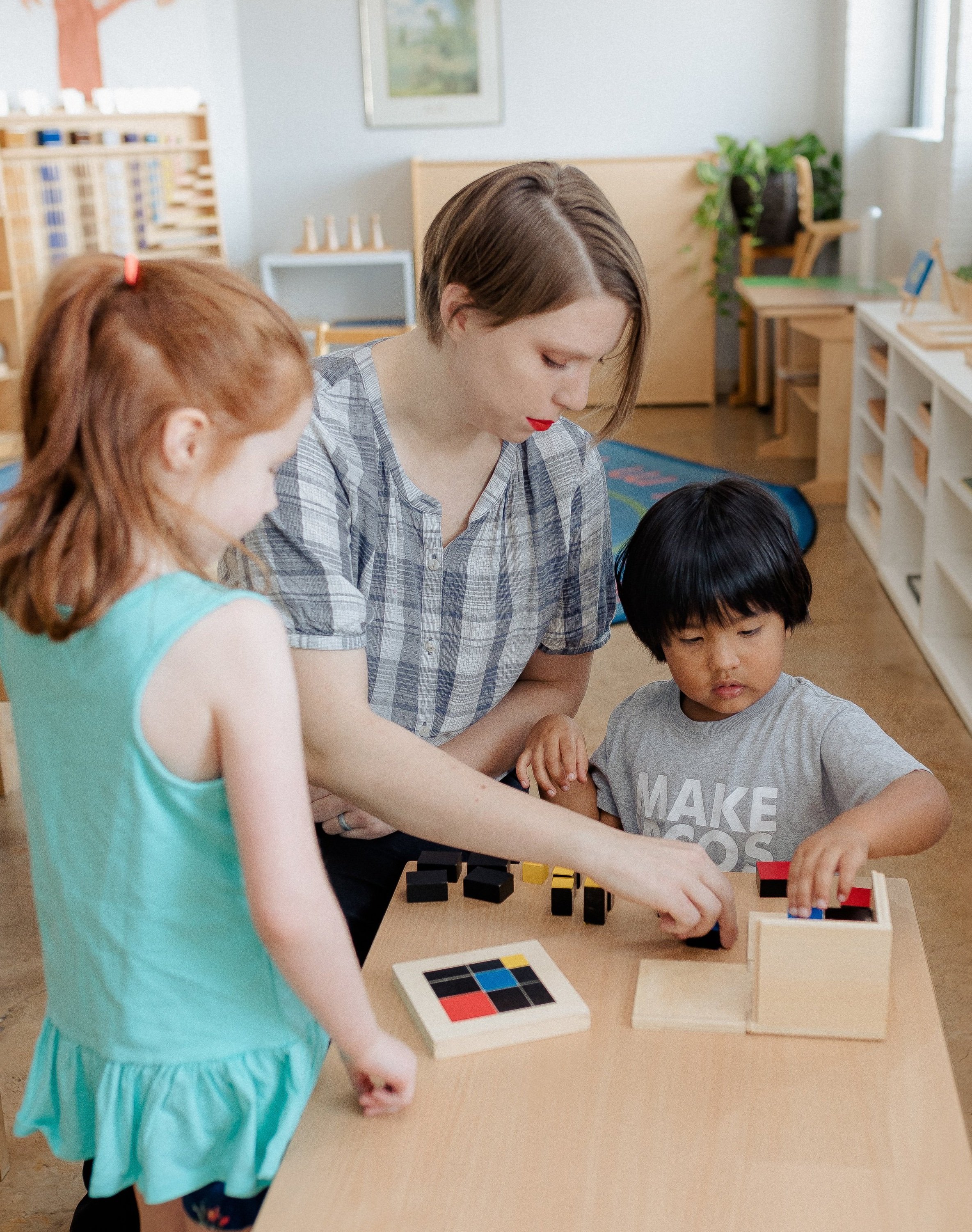The Montessori Method
What is the Montessori Method? How is it unique from traditional preschool and what makes it so successful?
Mixed Age Groups
Dr. Montessori divided children into classrooms comprised of three year age spans based on studies that showed distinct, three-year periods of cognitive development. When in groups comprised of students in the beginning, middle, and end of each plane of development, children naturally teach, and are taught by their peers.
Older students are encouraged to teach what they know to younger students, who can both learn from and look up to their “elders”. Leadership encourages responsibility as well as interpersonal skills.
Placing students where they can interact with a range of ages, experiences, and abilities also provides a far more realistic representation of the world outside classroom walls, better preparing children for their teens and adulthood.
The Prepared Environment
The Prepared Environment in the Montessori setting, is the meticulously arranged and lovingly preserved space in which a child is allowed the personal freedom to explore, create, and ultimately thrive.
Structured and uncluttered, it sets the stage for the child to learn at her own pace. By incorporating nature and beauty, the space beckons the child, piques her curiosity and welcomes her to "choose a work", explore, and interact. By being offered the opportunity to care for real, living plants and animals, the child will be given a lesson on her role in the world around her, as well as a newfound sense of respect and responsibility.
A true Montessori classroom is a beautifully flowing, well-oiled machine, where the children move like gears, finding their way to the work, meeting their purpose, and then, in their own time, guiding themselves on to their next venture.
The Five Areas of Learning
The Practical Life area of the classroom covers life skills, which helps develop independence, coordination, self-control, and self-awareness. Here the child will uncover a solid foundation for all other tasks in the classroom.
In the Sensorial area, materials like Sound Cylinders and Fabric Matching will arouse the child's senses, aiding him in becoming more aware and appreciative of the world around him.
The Language area encourages early literacy skills by giving the child the opportunity to work with tactile language materials such as the Sandpaper Letters and the Moveable Alphabet.
The Math area will introduce mathematics to the child in a concrete fashion with the use of hands-on materials such as Number Rods and the Spindle Box. Each exercise builds upon another.
The Cultural area of the classroom allows the child to explore the natural world around them by exposing them to everything from Zoology to Geography, Art, and Music.
The Natural Playground
Our heavily shaded Natural Playground utilizes tree stumps, logs, rocks, and large garden beds to offer a wide range of opportunities to connect children back to nature, stimulate creativity, and encourage development and play.
Children may access the outdoor class extension throughout the morning work cycle. They may choose to contribute to the garden, water the many plants, compost, or tend to the needs of the chickens. During free play children can enjoy our large, wooden playhouse, slide, climbing wall and paved bike path.




